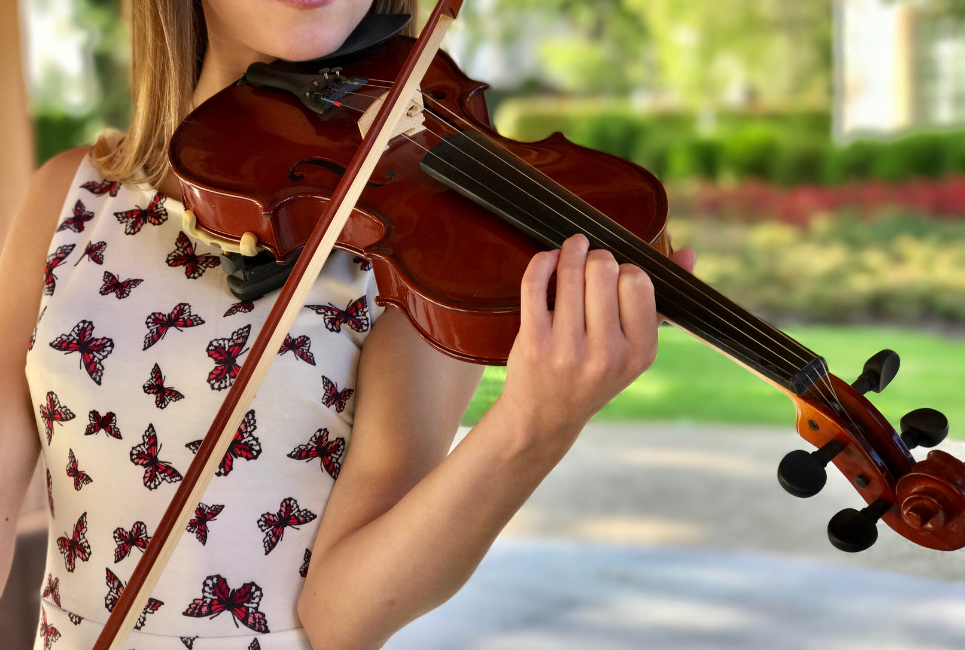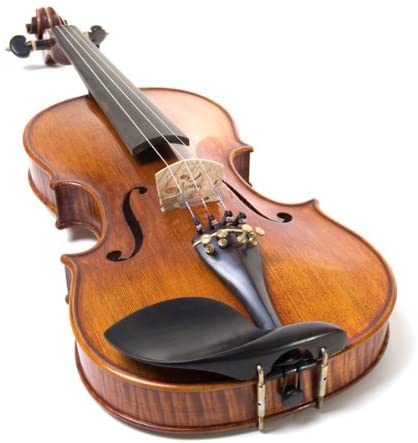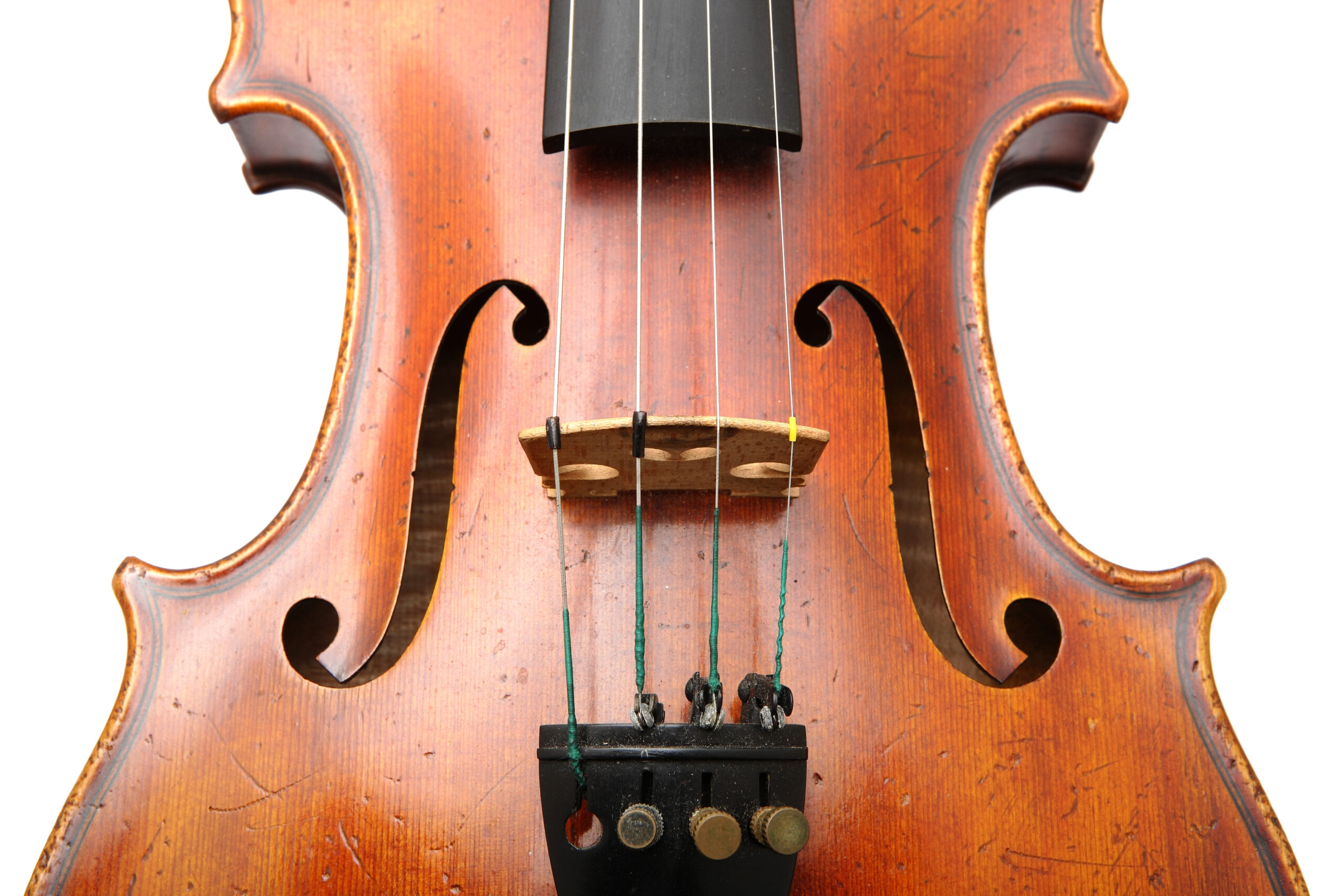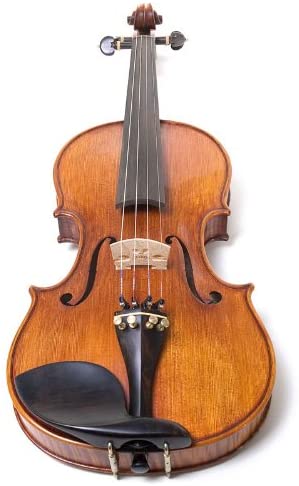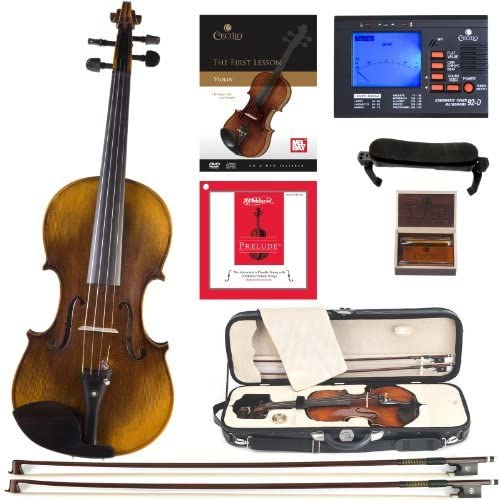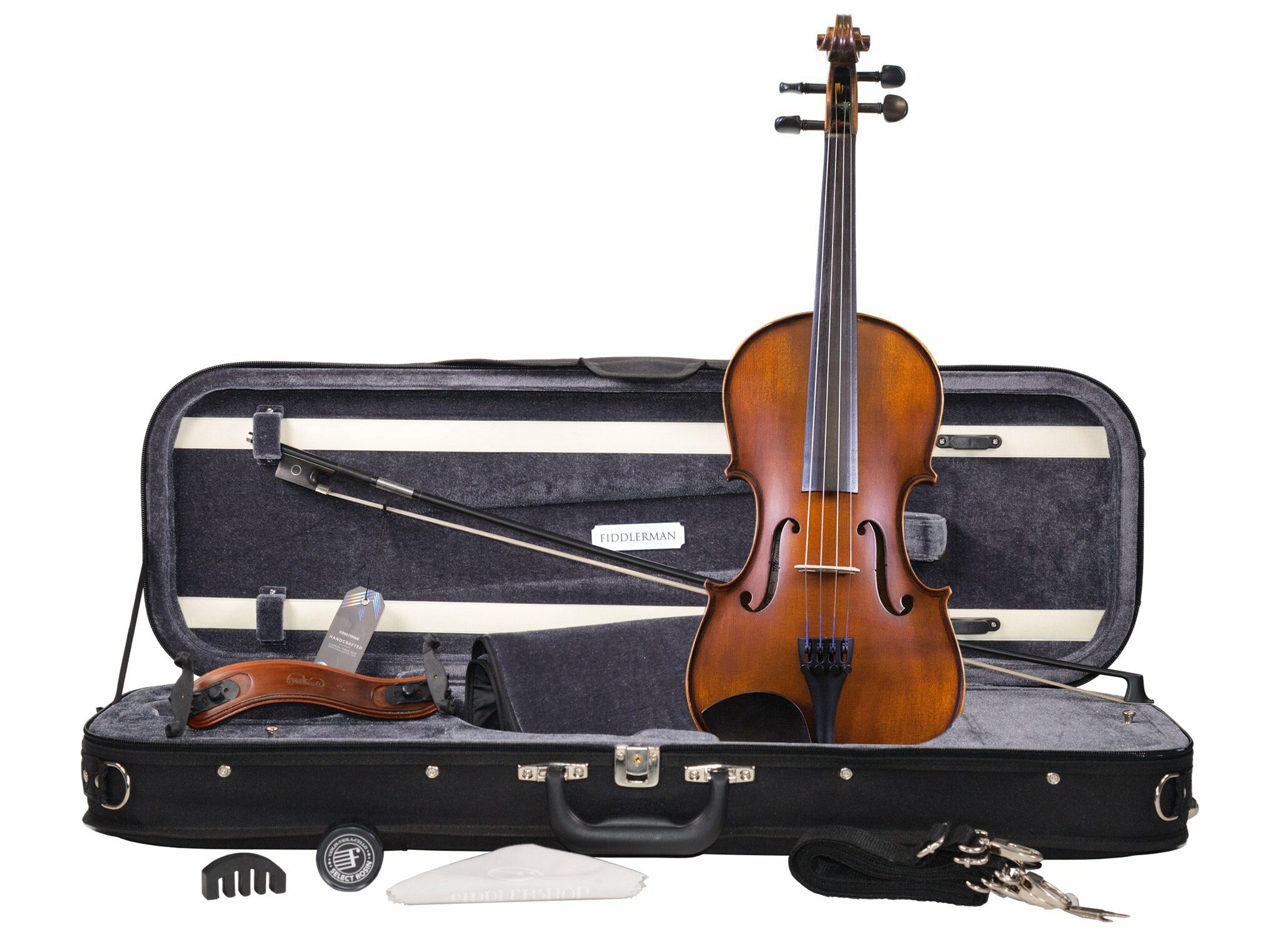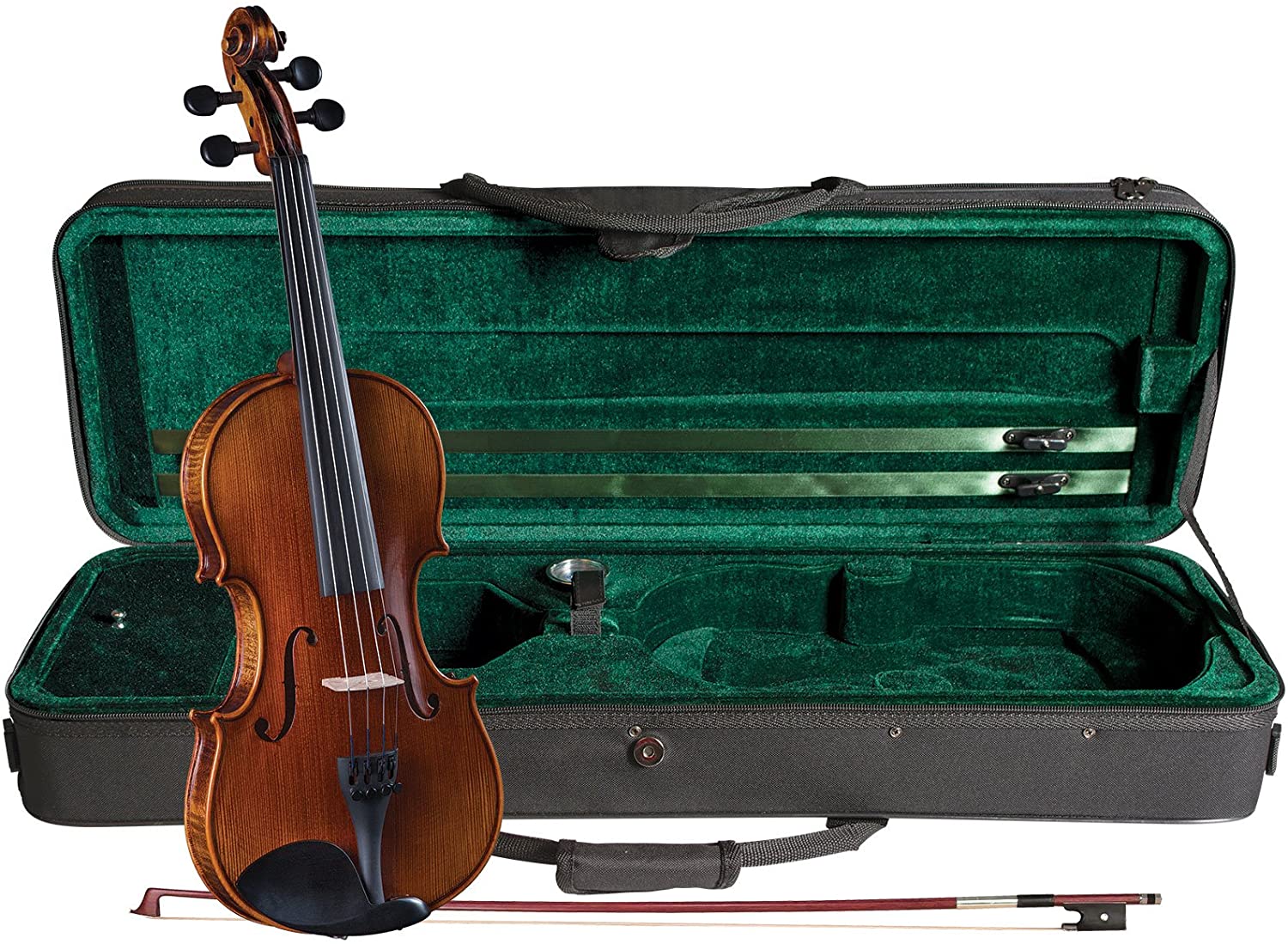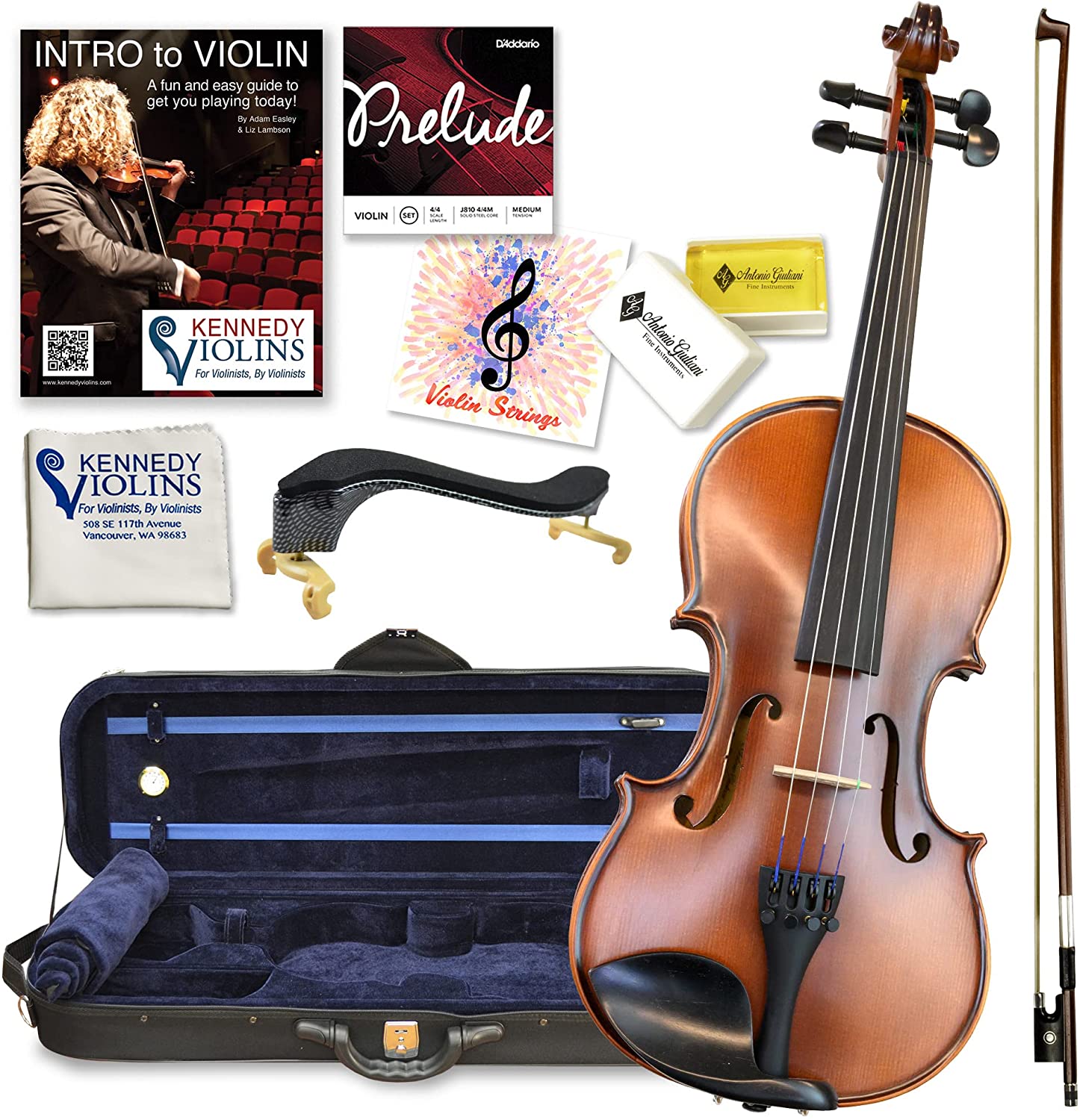- Best Fretted Violins Guide - May 31, 2022
- Best Yamaha Violins Brand Guide - April 13, 2022
- An Honest Mendini MV300 Review - March 31, 2022
Cecilio focuses a lot of its effort on making extremely affordable entry-level instruments. Cecilio has expanded their line to include some higher-level intermediate violins, thanks to the popularity of their lower-end instruments. Can the CVN 700 compete with the likes of Eastman, Kennedy, and Fiddlershop? Are you better off heading to your local music store, well let’s find out!
Pros, Cons, and Bottomline
My opinion of this violin is neutral. I don’t love it, but I don’t hate it either. While I wouldn’t mind owning this model, it wouldn’t be my first choice from Cecilio’s lineup. It’s a quality violin, and it sounds pretty decent out of the case, but it doesn’t catch my eye. With that said, if you like this violin, its sound, and the price point is right for you, then it’s a good choice.
If you are a brand new student or have one of their really low-end models like the CVN 100/200 or 300, then this violin would also be a great choice! With a better instrument at the beginning, you will progress farther and potentially faster on it. Better quality violins are easier to play and draw a tone out of. Meaning it’s easier for students to learn techniques without overworking their bo
w and fingers.
Overall I like this violin, but it’s not my first choice!
Pros
- Flamed tonewoods aged 7 years
- 1 piece maple back
- Solid spruce top
- Ebony fittings
- Decent upgraded violin case
Cons
- Red Label Strings
- Really bright out of the case
- Muddy lower register
- Poor quality accessories
- Semi-sprayed varnish
Intermediate Violins
Intermediate violins are a step up to student instruments. Many students purchase or receive an intermediate violin after the first few years or when they have exhausted everything they can get out of their student model. In general, the only thing that separates a student violin from an intermediate violin is the tonewoods and care taken into the instrument.
Tonewoods are the most critical aspect of a violin. You can have top-of-the-line fittings and a perfectly planed fingerboard, but if the wood is crappy, the instrument will be crappy. Even Stradivari’s violins are sought after because of the tonewoods, not just his craftsmanship. Student instruments will likely come with Chinese spruce and maple tonewoods that are unaged. Intermediate violins should be a step up in wood quality. I look for quality European tonewoods that have been aged for at least five years and hand-carved for the instrument.
Among other things that can affect tone, the finish or varnish is one. While it adds a nice pop of color, it can also help or hinder the violin’s projection. I look for hand oil rubbed violins, over machine sprayed. This assures that someone took their time to slowly apply the varnish evenly instead of quickly spraying it and moving on, allowing you to get the most out of the sound. The fingerboard should be ebony, and the fitting will vary. I’ve seen intermediate violins with ebony, boxwood, and even rosewood fittings. It will depend on the instrument and the shop.
Intermediate violins often come in outfits with included accessories. Student instruments usually come with quite a few accessories to get them started, including shoulder rests, music books, and extra strings. Intermediate outfits typically offer fewer but much higher quality accessories. I received just a bow, case, and rosin with my intermediate violin; however, they were of excellent quality, unlike my student instrument., I replaced every accessory with better quality that I still use now. The general assumption is that intermediate student will know their preferences and likely have many of the accessories they would otherwise include.
My Thoughts on the CVN 700
The Cecilio CVN 700 is a quality violin package. Still, it lacks a few of my crucial construction elements. You can do better even within Cecilio’s own lineup for the price. The tonewoods of this violin feature a hand-carved solid spruce top and a one-piece highly flamed maple back. The wood has been aged at least seven years, giving it a head start tonally. The one-piece maple back is incredibly nice aesthetically, but it doesn’t change overall. I’m very confident that the wood for this violin was sourced in China, where these instruments were created. I prefer European tonewoods on higher-end instruments, but Chinese is fine and even expected for the price.
The varnish is an antique reddish brown that has been semi-hand rubbed. This is a downside to my checklist because it creates a larger margin for error and an uneven finish. The CVN 600 is a decent bit cheaper but has fully hand-oiled varnish. It makes no sense that their higher-end violin would not be given the same treatment. I do like the look of the varnish, though.
Of course, the fittings are made from ebony, as is the fingerboard. The tailpiece is featured with four fine tuners, but I could only find one. This doesn’t affect me, but it will be frustrating for new players. A luthier can attach three more during setup if needed. The violin is strung with Red Label Sensitive strings, which I’m not a fan of. They are very bright and responsive strings, but they don’t sound outstanding overall. Changing the strings is a must for this violin, which I will discuss in the next section.
The outfit and accessories for this violin are plentiful but lack some quality. The extra strings can be thrown in the trash along with the bows. They aren’t quality and won’t allow you to get the best sound of this violin. The bow can be upgraded to a carbon fiber bow from any reputable brand. I like Fiddlershop, Cadenza, and Glasser bows. The case is very nice, with a spot for your shoulder rest and plenty of storage, along with two basic bow holders. The rest of the accessories can be used or upgraded. The shoulder rest and rosin will probably be that two will get replaced first. Kun makes great shoulder rests for students, and Piastro makes some cool Gold Flex rosin. Fiddlershop and Magic rosin are my other favorite brands for these items.
How Does the CVN 700 Sound
This violin has a bright and powerful upper register that sings nicely. The lower register is rather muddy out of the case, but I can hear the promise. Given that this violin is brand new, this doesn’t really surprise me.
Improving the tone of this violin is a three-step process. First, take it to a luthier and give it a full setup. They will make any adjustments needed to make sure you get the best out of this violin.
While your violin is getting adjusted, pick out some new strings. The strings on this violin leave a lot to be desired. Dominants will help open this violin up on the G strings a little more and are a pretty standard student string. If you wanted to try something higher-end, I love Evah Pirazzi and Obligatos from Piastros. Really any string set would be an upgrade to the Cecilio in-house brand.
Lastly, just spend some time practicing regularly. Over time the wood of your violin will age and shift, allowing the personality to be revealed and enjoyed. After six months or so, I imagine this violin will warm up quite a bit, and after a year, I can see it settling into itself. However, the tone will just get sweeter with age!
My Favorite Violin Picks
The CVN 700 doesn’t impress me, but it’s not unimpressive either. Still, many violins do impress me for a similar price point. These violins have a pleasant tone and are made with quality materials.
CVN 600
If I had to choose a violin from the Cecilio line, the CVN 600 would be it! This violin is made from the same tonewoods as the CVN 700. Still, it features a fully hand-oiled varnish and D’Addario Prelude strings. Additionally, its runs about 100 dollars less than the CVN 700 for a technically better instrument. I prefer the tone of this violin over the CVN 700 as well. It’s very mellow across all registers, which suits my playing style and tone preferences very well. The fingerboard and fittings are pure ebony and have a pearl inlaid detail. The included accessories are the same, so you aren’t losing any money in that department, and the same upgrades still apply. Although the strings are decent enough, you don’t have to change them out.
Fiddlershop OB1 Violin
Next, I would choose the Fiddlershop OB1 Violin. This is a really inexpensive violin outfit for the price, and you can’t really go wrong with any Fiddlershop instruments. This violin features solid carved tonewoods that have been aged at least four years and solid ebony fittings. The bridge and strings are chosen based on the instrument. The bridge will either be a French Despiau or Holstein 1-star, and the strings are either D’Addario Prelude or Fiddlershop strings. The outfit includes a carbon fiber bow, quality case, shoulder rest, dark rosin, practice mute, polishing cloth, and digital tuner. You get a tone for your money, and all accessories are actually useable. This violin sounds excellent overall, but it does have a slightly brighter upper register. The lower register is nice and clear but lacks personality. That might change as the violin ages.
Cremona SV-500
The Cremona SV-500 is a popular step-up violin for a cheap package. This violin features hand-carved solid spruce and flamed maple tonewoods. The varnish is hand-applied, and the bridge is French Aubert. The fittings and fingerboard are pure ebony, and the violin is strung with D’Addario Prelude strings. The outfit comes with a quality case, a brazilwood bow, and a shoulder rest. I enjoy the sound of this violin; it’s very even. Neither too bright nor dark, and I think you could learn quite a bit on this violin.
Antonio Giuliani Etude
The Antonio Giuliani Etude violin comes from the well-known violin retailer Kennedy Violins. This is a gorgeous instrument crafted and set up in the United States. This violin features hand-carved solid Himalayan tonewoods, pure ebony fittings, and a fingerboard. The varnish is oil that I believe is sprayed on. However, Kennedy has pretty rigorous instrument testing. They sell their imperfect violins for a discounted price and ensure that they still play to their full potential. The bridge is custom fit to the violin, and it comes strung with D’Addario Prelude strings. This violin has a charming sound with a very clear lower register. However, the upper register is a little too much for me. Different strings would likely help even that out. The outfit comes with a Guiliani Bow and a quality case, along with a music book, shoulder rest, rosin, extra strings, and polishing cloth.
FAQs
Answer: A lot goes into setting up a violin, including adjusting the bridge, soundpost, and strings. The more care is taken during setup, the more you will get out of your violin. It’s essential to make sure a professional sets up your instrument. Many online retailers set their instruments up before shipping them, while others like Cecilio leave the bridge down. This requires you to take it to a Luthier for setup, incurring extra cost.
Answer: This question is hilariously disturbing but to ease your worries, not they certainly aren’t made from cats. Catgut is likely shorthand for cattle gut, which makes sense as most gut strings are made from sheep intestines. Catgut strings were traditional at one point but have lost popularity for synthetic strings, which are stable against humidity and temperature changes.
Answer: Not that I’m aware of. As long as the cake is in a useable piece, rosin is generally acceptable. It can take decades to get through a rosin cake, so making them have a shelf life wouldn’t make much sense, as so little is used during day-to-day practice. Most people break their rosin before finishing it. Even then, you can remelt it if you have the tools.
Answer: Andre Rieu plays an original Stradivarius from 1666/1667. Stradivarius violins are some of the most sought-after violins worldwide. Thanks to Stradivari’s impeccable construction and tonewood sourcing. This violin is worth several million dollars!
Final Thoughts
Cecilio makes a lot of great student instruments. Still, once you reach the CVN 600, you’ve pretty much found the best violin they are capable of producing. The CVN 700 falls short of its cheaper counterpart but is still a quality instrument. It’s excellent for those wanting a brighter violin but maybe too much from others. Changing the strings and breaking the instrument in will help even it out.
Looking for more interesting readings? Check out:

